Many interesting natural objects can be found while out hiking, walking along a streambed, or digging on your property. Fossils, animal bones and teeth, unusually shaped rocks, minerals, shells, and colorful leaves in the fall are likely to be discovered. If you don’t immediately recognize what you’re found, the next logical step is to ponder what it is.
But before you collect an object in nature, be sure that it’s legal for you to do so. Objects in parks or nature preserves are the property of the owner or the managing agency and must not be removed. This also holds true for private property. Be sure to have the owner’s permission before accessing the property or removing any objects. Also some types of items in nature are not permitted to be collected or disturbed. Bird feathers, eggs, and nests are all protected by federal law, and endangered species are protected by state or federal agencies. In such cases, take photos and leave objects where they’re found!
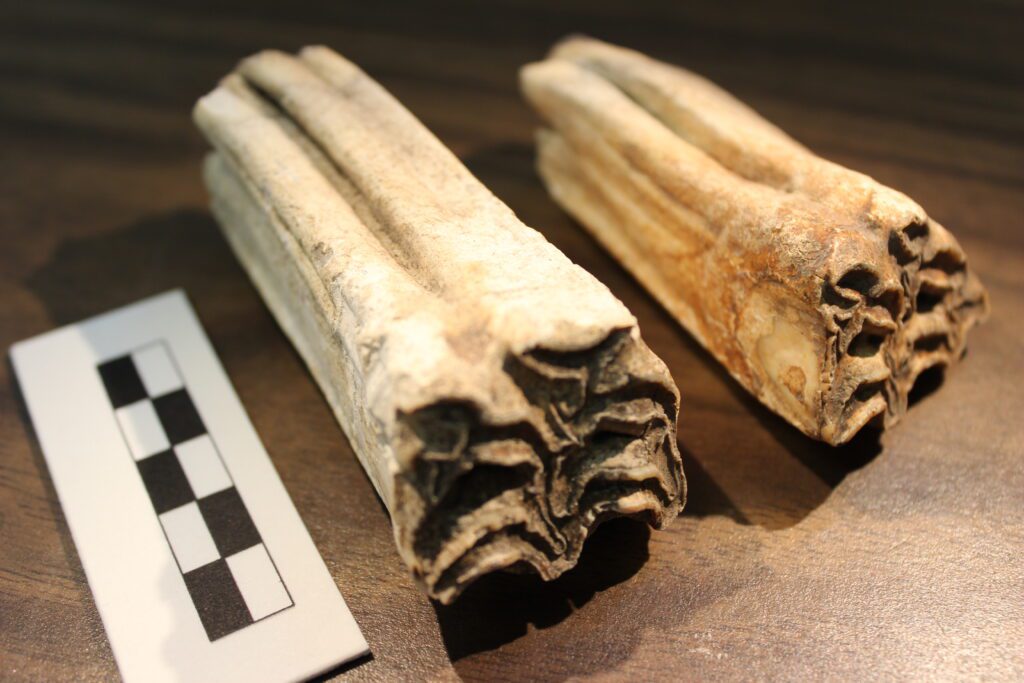
Cheek teeth of a horse. Scale in centimeters (Ohio History Connection photo).
Sometimes what you find turns out not to be what you think it is. It can be exciting to find what looks like a dinosaur tooth, but then it can be a let-down to learn that what you actually have is a common horn coral fossil. Or that the meteorite you found is just a piece of slag from an old iron furnace. I’m familiar with that kind of disappointment. When I was about 12 years old my friend and I found what we were sure was a bone from some large extinct animal. My mom drove us down to the Orton Geological Museum at Ohio State, with our earth-shattering discovery carefully wrapped and placed in a cardboard box. It was a big let-down to learn it was just a piece of chert (flint). It’s all about education, and you can learn from each find and sharpen your knowledge and skills at identification. This can lead to a rewarding hobby as a collector or maybe even to a career as a museum curator!
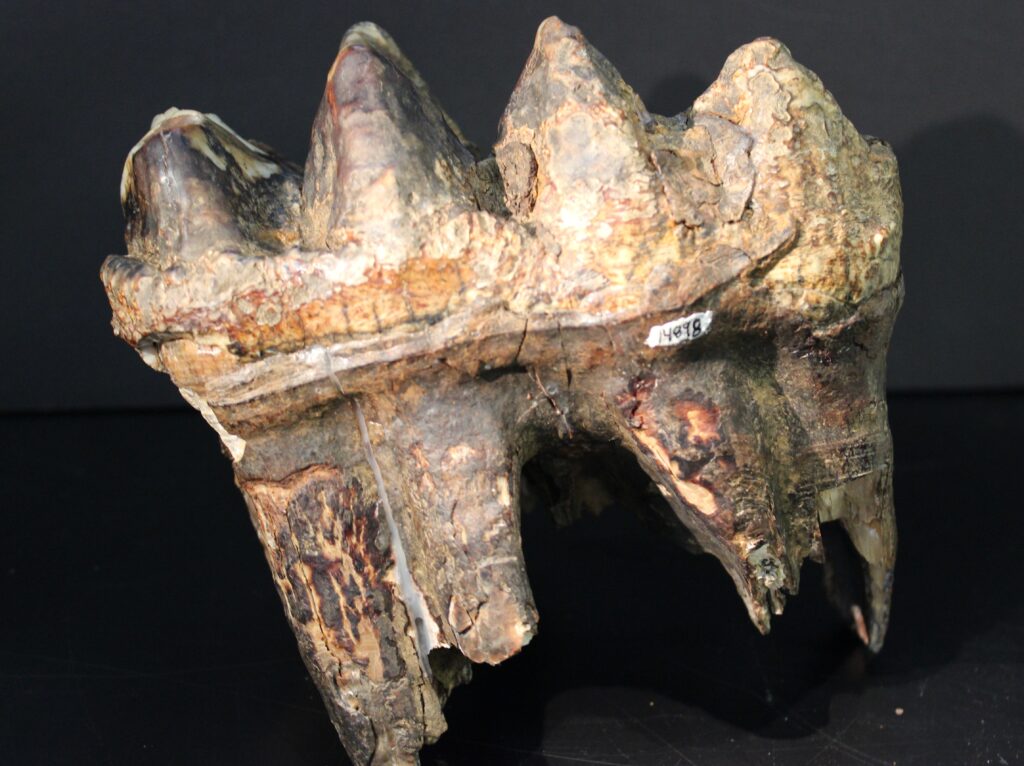
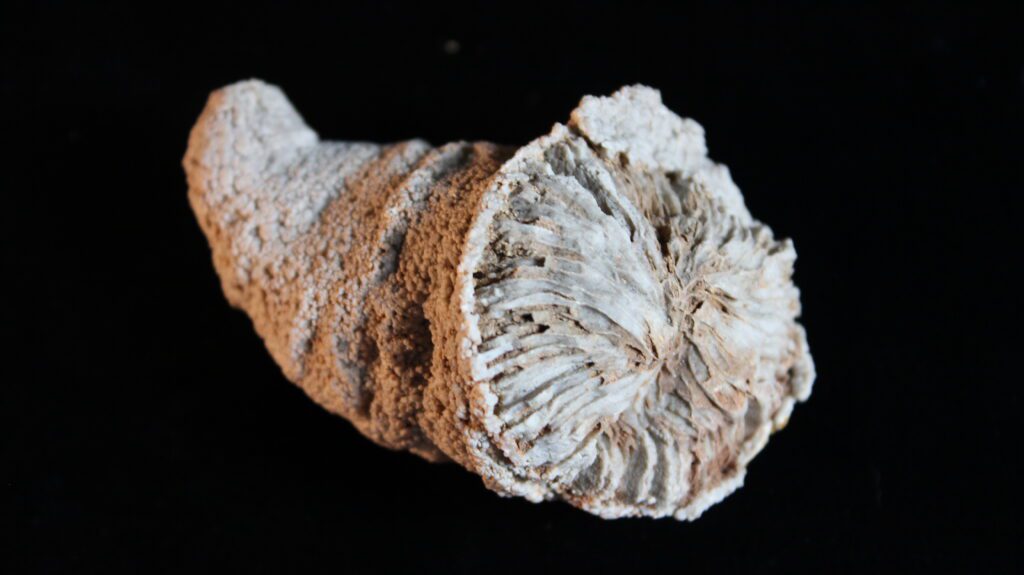
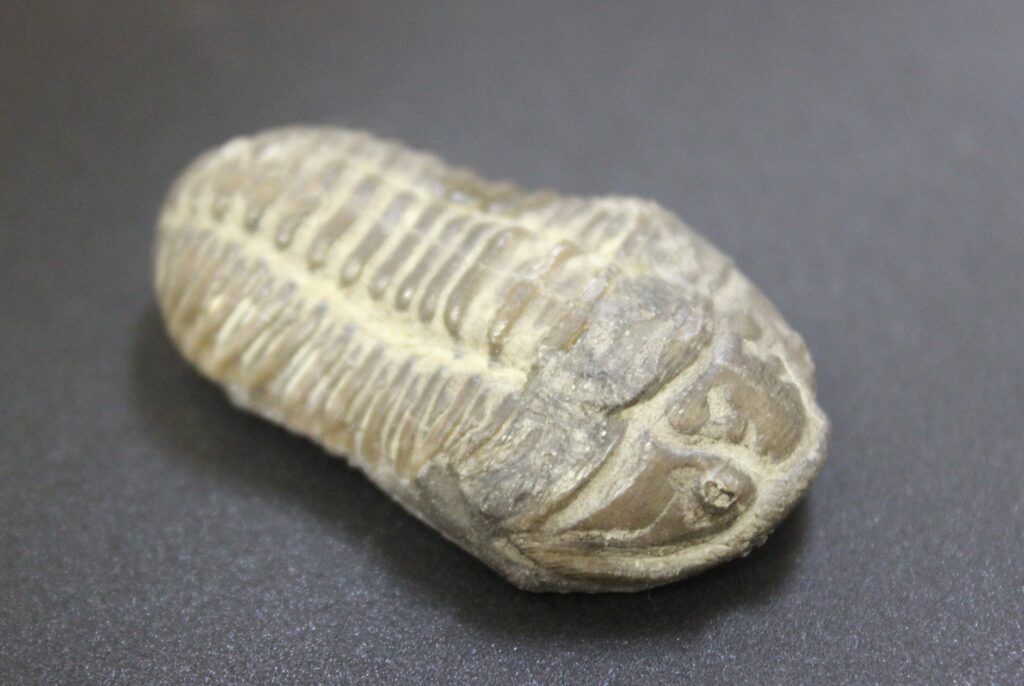
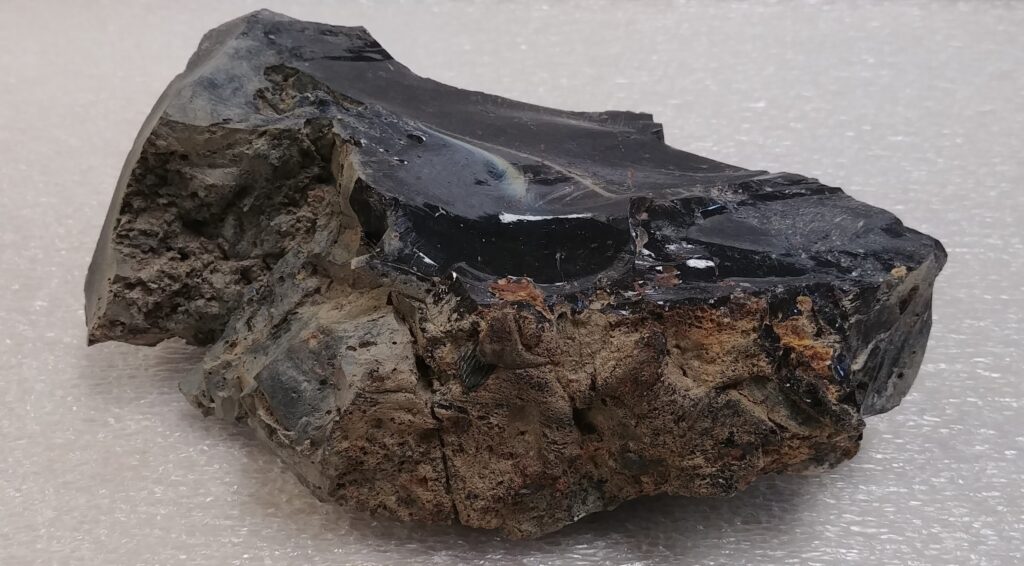
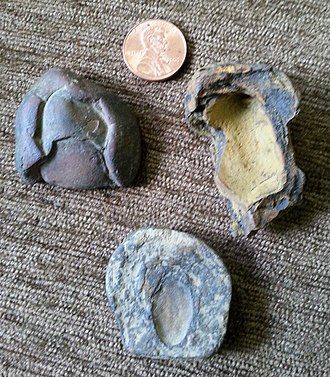
Clockwise from upper left: mastodon tooth, horn coral, trilobite, small concretions, slag from Hope Furnace, Vinton Co. (Ohio History Connection photos; concretion photo Wikipedia Commons).
The chart below shows types of items that are typically found in Ohio, and what they might appear to be at first glance. This should help eliminate some of the common misidentifications and help you narrow down your find to the correct identification. A couple comments on objects in the left column are warranted. First, there are no dinosaur remains found in Ohio! The rocks that hold dinosaur remains are not found in Ohio. So either these strata were never deposited here, or if they were, have long since eroded away. Also, many people think they have found meteorites but these are extremely rare in Ohio. Only 14 meteorites have ever been found in the Ohio, during the entire period of human history in the state. For more information on Ohio meteorites, visit the Ohio Geological Survey website on meteorites. Concretions are mentioned several times in the right column. These structures are relatively common in Ohio’s sedimentary rocks, such as shale, sandstone, and limestone. Concretions are masses of minerals that form within the rock layers, and are created by the precipitation of minerals out of groundwater. Often they will form around a nucleus such as a small fossil or pebble. For a good description of the different types of concretions, go to the concretion webpage of the Paleontological Research Institution.
| What it might look like: | What it usually turns out to be: |
| Dinosaur bone | Weathered rock, concretion |
| Dinosaur brain or egg | Concretion |
| Meteorite | Slag, concretion, iron-oxide nodule |
| Human bones | Animal bones – deer, cow, bear |
| Dinosaur tooth/carnivore tooth | Fossil horn coral |
| Ice Age mammal tooth | Cow, pig, horse teeth; concretion, rock |
| Fossil animal skull | Weathered rock, chert nodule, modern animal skull |
| Fossil footprints | Weathered rock |
| American Indian artifacts | Any of the above! |
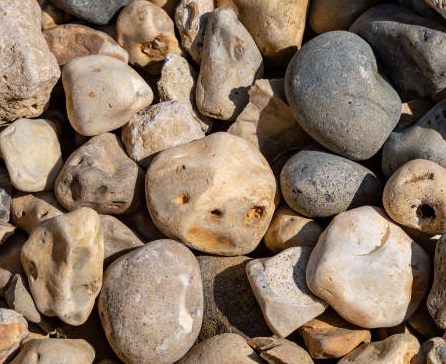 Another source of confusion when making identifications is that our brains are hard-wired to see familiar patterns or objects, sometimes where they may not even exist. This concept has a name: pareidolia, defined as the tendency to see a meaningful image in a random visual pattern. The classic examples of pareidolia are seeing faces or animals in cloud formations or rocks, and even images in a piece of toast. We’ve all done this, and as a bone collector I’ve picked up numerous sticks and rocks that I was sure were bones, until I picked them up for a closer look. When you think about it, there is a literally endless variety of shapes that are naturally created in nature by processes of erosion, weathering, breakage, and the freeze-thaw cycle. For example, it’s not surprising that in a stream-side beach of broken shale we can see many shapes that are familiar to us; faces, hands, footprints, and even artifacts.
Another source of confusion when making identifications is that our brains are hard-wired to see familiar patterns or objects, sometimes where they may not even exist. This concept has a name: pareidolia, defined as the tendency to see a meaningful image in a random visual pattern. The classic examples of pareidolia are seeing faces or animals in cloud formations or rocks, and even images in a piece of toast. We’ve all done this, and as a bone collector I’ve picked up numerous sticks and rocks that I was sure were bones, until I picked them up for a closer look. When you think about it, there is a literally endless variety of shapes that are naturally created in nature by processes of erosion, weathering, breakage, and the freeze-thaw cycle. For example, it’s not surprising that in a stream-side beach of broken shale we can see many shapes that are familiar to us; faces, hands, footprints, and even artifacts.
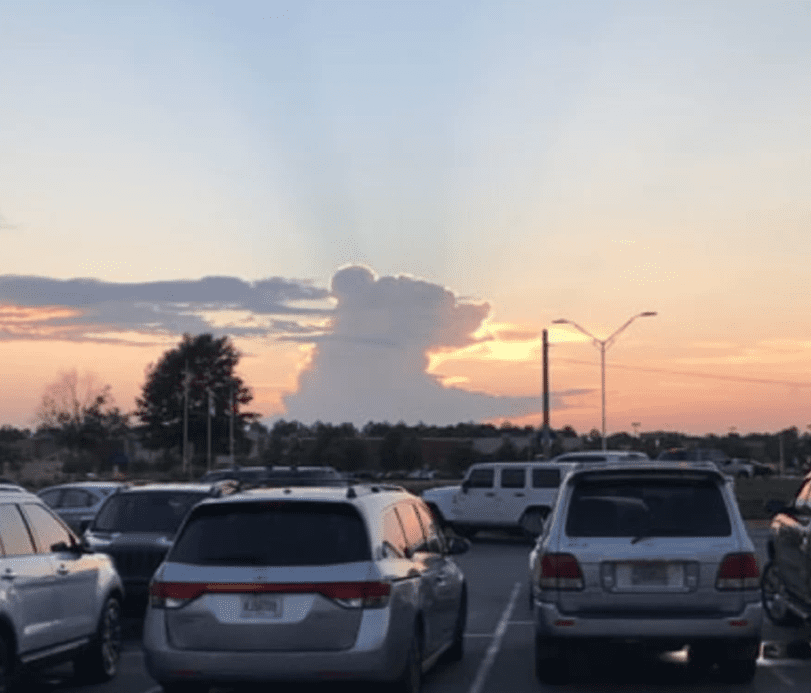
An example of pareidolia. See the bear in the clouds? (photo r/pareidolia)
To help in the journey of identifying your objects, we’ve put together a series of Library Guides (“LibGuides”). These will guide you to the resources that will allow you to pursue information about your object. These guides include our favorite reference books and specialized web sites on identifying different groups of objects. Start with the Resources Overview page, then go to the links on the left side of the page for different types of objects.
Unfortunately, curators are not available to examine items in person or via photos for identification. However we are still interested in seeing animal bones that are found in Ohio. Remains of scientifically important Pleistocene (Ice Age) species are uncovered in the state from time to time, and we’d like to document such finds. We also may be able to accept selected specimens for the permanent collections of the Ohio History Connection. See the Animal Bones and Teeth page for more information.
Happy collecting!
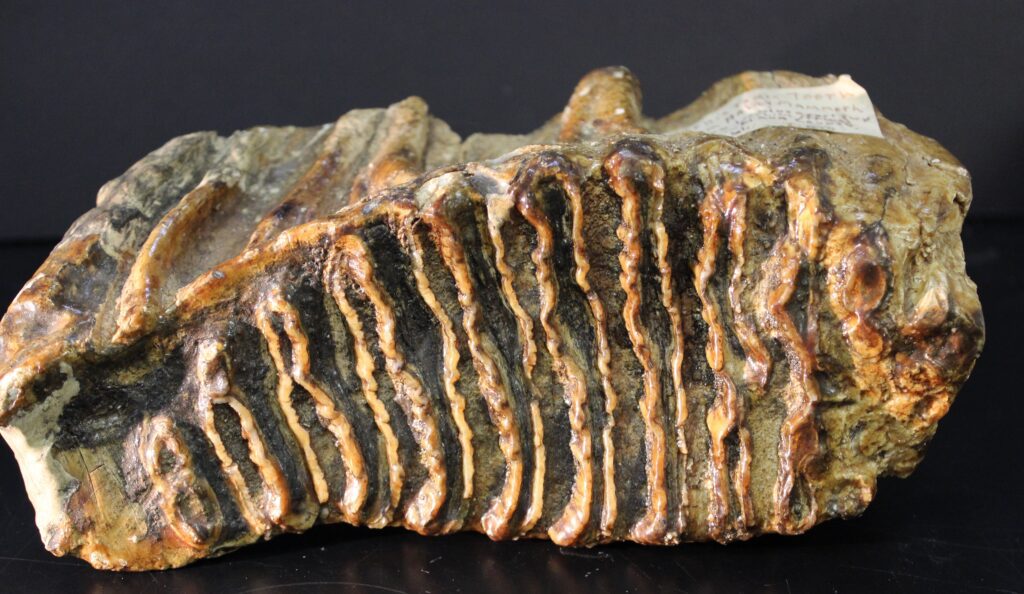
Tooth of a mammoth from Columbiana County, Ohio (Ohio History Connection photo).